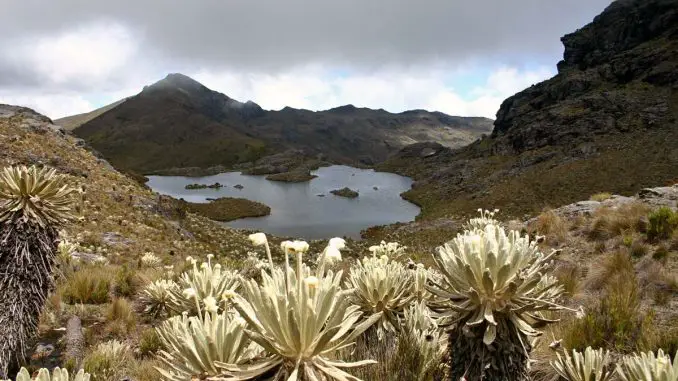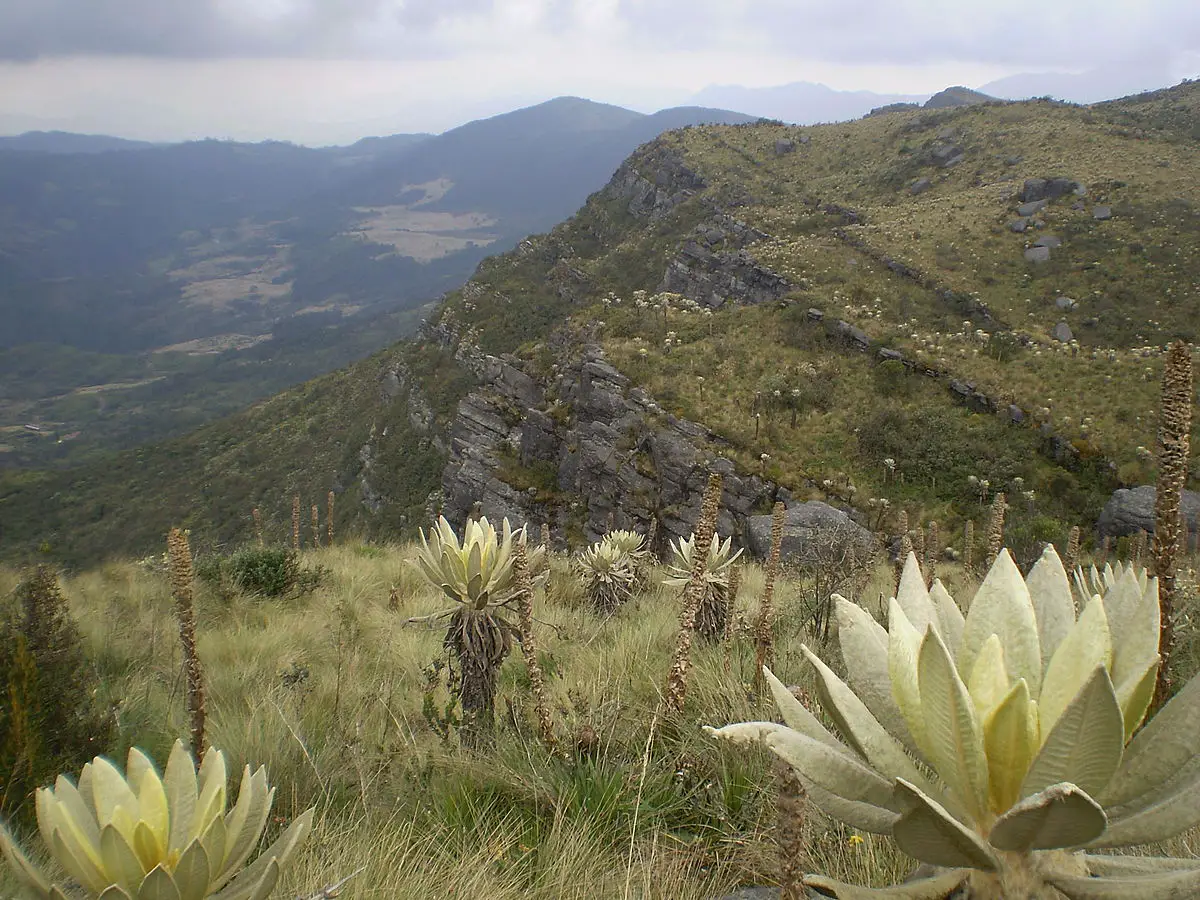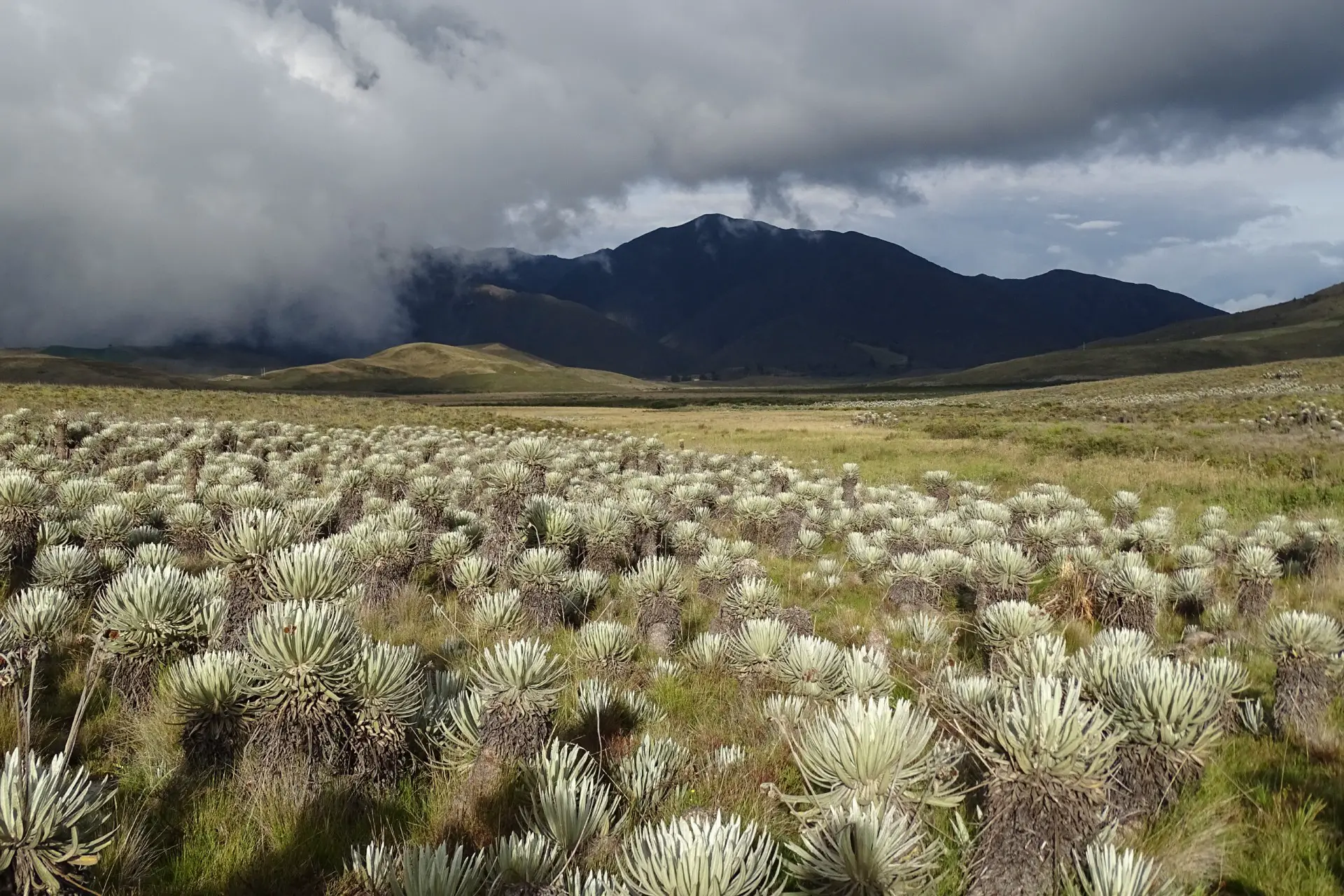
Páramo is a Spanish word and is the name for alpine grass and shrubbery about 3,200-4,500 meters in the northern parts of the Andes, or parts of Central America often between the forest border and the cold desert closest to the snow border.
According to Wikipedia, Páramo is a:
“variety of alpine tundra ecosystems. Some ecologists describe the páramo broadly as “all high, tropical, montane vegetation above the continuous timberline”. A more narrow term classifies the páramo according to its regional placement in the northern Andes of South America and adjacent southern Central America. The páramo is the ecosystem of the regions above the continuous forest line, yet below the permanent snowline. It is a “Neotropical high mountain biome with vegetation composed mainly of giant rosette plants, shrubs, and grasses”. According to scientists, páramos may be “evolutionary hot spots” and among the fastest evolving regions on Earth.”
Páramo is not commonly discussed when it comes to nature, but it is beautiful and interesting, and should certainly not be neglected.

The majority of the páramo ecosystems occur in the Colombian Andes. The Sumapaz Páramo which is about 20 kilometers south of Bogotá is the largest páramo in the world. This Páramo was declared a National Park of Colombia in 1977 due to its biodiversity hotspot.
Depending on where in the world a Páramo is, its climate will vary. The Páramos in Colombia and northern Ecuador are affected by the Intertropical Convergence Zone(ITCZ), and therefore, they tend to have a consistent humidity of approx. 70-85%.
According to Wikipedia:
“Overall, páramo climates are known for their daily fluctuations in temperature and humidity. While they are generally cold and humid ecosystems, they often undergo a sudden and drastic change in weather in which they fluctuate between temperatures from below freezing to as high as 30 °C (86 °F). This oscillation often results in a daily freeze-and-thaw cycle, sometimes described as “summer every day and winter every night.” Mean annual temperatures of páramo ecosystems range from 2 °C (36 °F) to 10 °C (50 °F), with increasingly colder temperatures at higher latitudes.”
The soils of the Páramo ecosystem vary, but most are young and partially weathered. The soil has a relatively low pH value due to an abundance of water and organic content. Organic content, even in disturbed locations have good water retention in the soil. During cold and wet weather, few nutrients are available and productivity is thus very low in Páramos’ soils during this time. Soils in the ecosystem have changed due to human activity, especially due to the burning of vegetation to clear land for grazing.
The soils of southern Ecuadorian páramo are generally characterized in andisols, inceptisols, histosols, entisols, and mollisols. Recently, there has been an increase in andean oil soils, mainly due to more volcanic activity. These soils have a very high fluid retention rate, which contributes to the increased cultivation and differentiated land use.
Páramos climates vary slightly depending on the specific location. In Colombia and northern Ecuador, air masses from the intertropical convergence zone have a significant effect on the climate, and these regions tend to be consistently humid (around 70-85%) throughout the year.

Páramos in the northernmost Andes of Venezuela, northern Colombia, and Costa Rica are experiencing a different climate due to the dry season caused by the northeast winds. Southern Ecuador and northern Peru experience the most troublesome dryness as they are affected by an air mass from the Amazon region, which releases its moisture on the eastern side, as well as another air mass from the west affected by the Humboldt stream.
The daytime average temperature stays a few plus degrees throughout the year, but during the dry season the temperature difference is large between the night when it freezes, and the day, when it can be +30 ° C. This swing often results in a daily freezing and thawing cycle. Average annual ecosystem temperatures range from 2 ° C to 10 ° C, with increasingly colder temperatures at higher latitudes.
The rainfall is around 750 mm per year.
Character plants in the spring are among other things. a. Small basket-flowered Espeletia trees with unbranched trunk and a wreath of vitulous brad at the top, and at about 4,200 meters in height there are often low trees of the rose plant species Polylepis.
In the broad sense, the word páramo is also used for the corresponding high mountain vegetation throughout the tropical belt.
The vegetation in Páramo provides protection and habitat for a variety of mammals, birds, insects, amphibians, and reptiles. Some animals are common in páramo’s ecosystems such as Andean fox (sometimes called páramo wolf), white-tailed deer, and eyeglasses that sometimes pilgrimage to high páramos for their favorite food, Puya pineapple plants.
Invertebrates such as grasshoppers, cockroaches, beetles, and flies can be found in subpáramo. Amphibians are also well documented in Paramos ecosystems, such as salamanders, frogs, and reptiles.
Leave a Reply